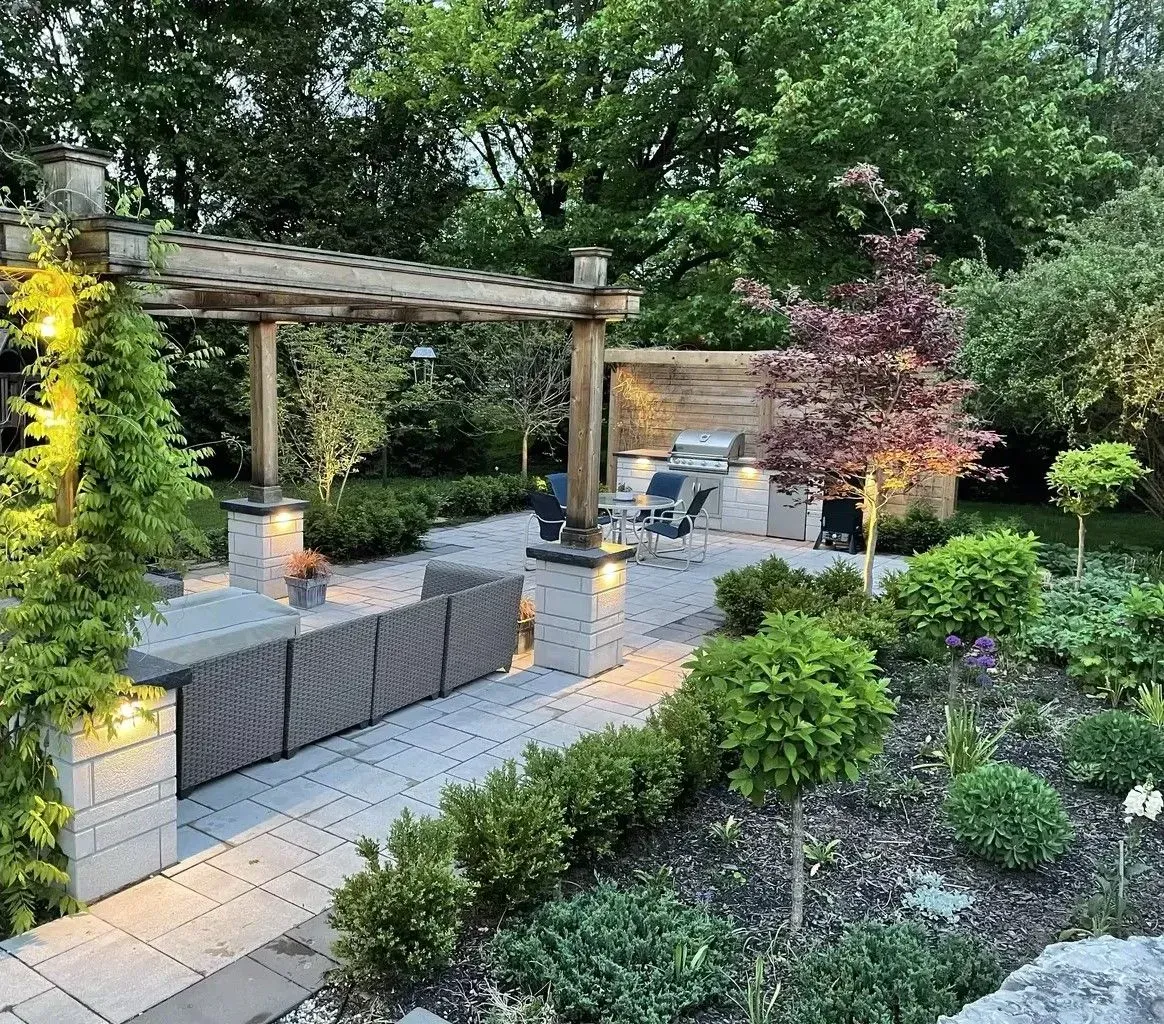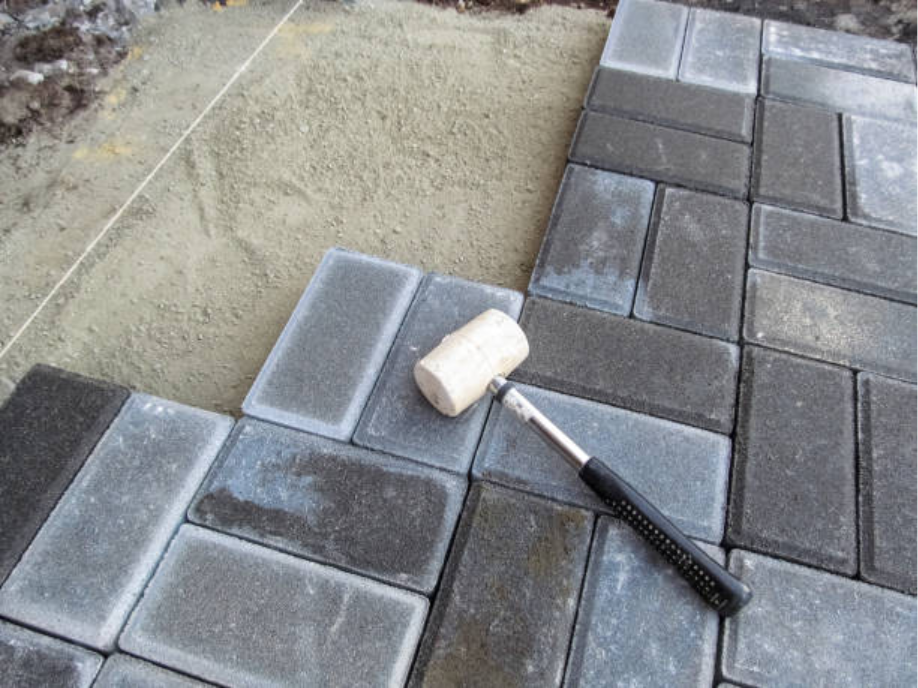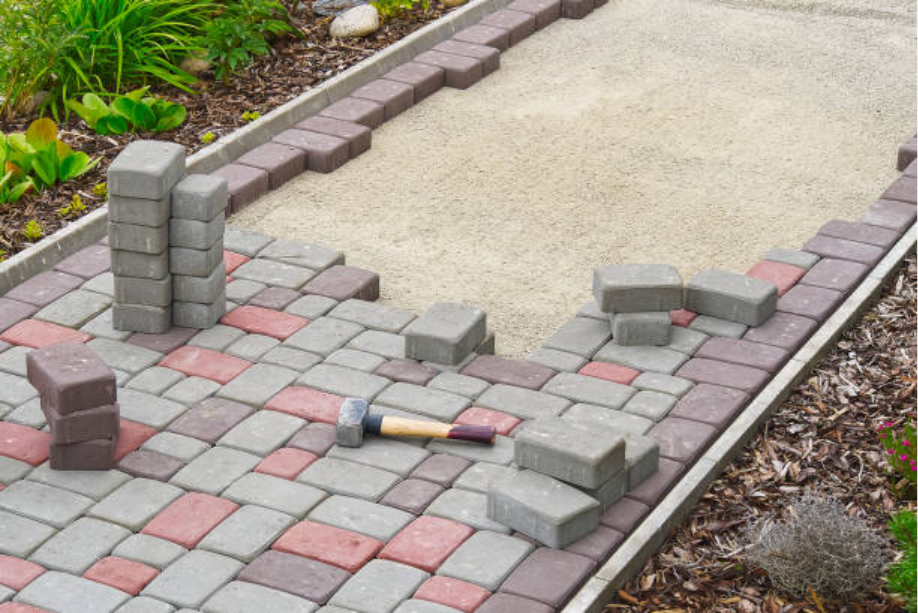Hardscaping vs Landscaping

Hardscaping vs Landscaping: What Is The Difference?
Understanding the distinction between landscaping and hardscaping is the first step toward creating an outdoor space that reflects your style, meets your needs, and stands up to Ontario’s seasonal extremes. While both disciplines work hand-in-hand to transform a bare yard into a functional and beautiful environment, they involve very different materials, techniques, and planning considerations. In this comprehensive guide, we’ll dive deep into the characteristics of landscaping and hardscaping, explore their unique benefits, discuss key design and cost factors, and provide maintenance tips so you can plan your next outdoor project with confidence.
What Is Landscaping?
Landscaping refers to all the living elements of your outdoor space. It encompasses the design, installation, and maintenance of plants, soil, turf, and water features that bring color, texture, and life to your yard. Core components of landscaping include:
- -Plant Selection & Placement: Choosing trees, shrubs, perennials, and annuals that thrive in Ontario’s climate and arranging them to create visual interest.
- -Turf & Ground Covers: Establishing lawns or low-maintenance ground covers to provide a soft, green carpet underfoot.
- -Soil Preparation & Grading: Ensuring proper drainage and nutrient balance so plants establish healthy root systems.
- -Water Features & Irrigation: Incorporating ponds, streams, or irrigation systems to nourish plants and enhance ambiance.
A well-executed landscape design not only boosts curb appeal but also creates an attractive environment that improves air quality, supports local wildlife, and creates shaded retreats that reduce energy costs. These features make your house more inviting and can significantly increase its resale value.
Introduction to Landscaping
Landscaping refers to the process of modifying the visible features of an area of land to create a beautiful and functional outdoor space. This can include a wide range of activities, such as planting trees and beautiful flowers, installing hardscape features like patios and walkways, and creating water features like fountains and ponds. The goal of landscaping is to create an outdoor living space that is both visually appealing and functional, providing a great place for relaxation, entertainment, and enjoyment.
Landscaping can also involve the creation of retaining walls, outdoor kitchens, and fire pits, which can add value and beauty to a property. A well-designed landscape can transform a yard into a beautiful and inviting outdoor space, perfect for outdoor living and entertainment. This requires a deep understanding of different forms of landscaping, including hardscaping and softscaping, as well as the materials and techniques used in each.
The art of landscaping has been studied and practiced for centuries, with many different disciplines and styles emerging over time. From the use of natural scenery to the incorporation of beautiful flowers, landscaping is both a science and an art that enhances the beauty and functionality of outdoor spaces.
Types of Landscaping
There are many different types of landscaping, including residential landscaping, commercial landscaping, and industrial landscaping. Each type of landscaping has its own unique challenges and opportunities, requiring a deep understanding of the specific needs and goals of the project.
Hardscaping is a type of landscaping that involves the use of non-living materials like stone, concrete, and wood to create structures like patios, decks, and walkways. These hardscape features provide structure and durability to the outdoor space. On the other hand, softscaping involves the use of living materials like plants, trees, and shrubs to create a beautiful and natural landscape.
A full range of landscaping services may include the installation of hardscape features, the planting of softscape features, and the creation of water features like fountains and ponds. Landscaping can also involve the use of outdoor lighting, drainage systems, and other features to create a functional and beautiful outdoor space. The choice of materials and features will depend on the specific needs and goals of the project, as well as the climate, region, and meaning of the landscape.
What Is Hardscaping?
Hardscaping design involves the non-living, structural components of your outdoor environment. These are the “hard” features that define pathways, seating areas, and boundaries—think stone, concrete, and metal, rather than soil and plants. Common hardscaping elements include:
- -Patios & Decks: Outdoor living rooms crafted from pavers, natural stone, poured concrete, or wood.
- -Retaining Walls & Edging: Structural walls that control soil erosion, create level planting beds, or define garden borders.
- -Driveways & Walkways: Durable surfaces that guide visitors safely to your front door or around your yard.
- -Fire Pits & Outdoor Kitchens: Gathering spots that extend the usability of your yard into cooler evenings and Canada’s shoulder seasons.
Hardscaping sets the foundation for outdoor functionality. It provides structure, traffic flow, and gathering spaces—while also delivering visual contrast against softer, living elements. The choice of material is crucial in determining the durability and aesthetic appeal of these features.
Key Differences at a Glance
Landscaping
-Materials - Soil, plants, mulch, water
-Primary Function - Aesthetic appeal, ecology, seasonal color
-Maintenance Needs - Pruning, fertilizing, watering, seasonal planting
-Installation Timeline - Often phased over seasons for plant establishment; for example, trees and shrubs may be planted in different seasons to ensure optimal growth
-Lifespan - Variable—plants may need replacing every few years
Hardscaping
-Materials - Stone, pavers, concrete, wood, metal
-Primary Function - Structure, durability, traffic flow, usability
-Maintenance Needs - Sealing, cleaning, repair of stones or concrete
-Installation Timeline - Can be completed in days or weeks, depending on size
-Lifespan - Often lasts decades with proper care
Benefits of Investing in Landscaping
- Enhanced Curb Appeal - Lush trees, vibrant flower beds, manicured lawns, and grass can increase your home’s resale value by up to 20%. Thoughtful plant selection also softens the harsh lines of buildings and hard surfaces, creating an inviting entryway.
- Environmental Advantages - Native and drought-tolerant plants reduce water usage and support pollinators. Green canopies provide shade that cools your home in summer and mitigates stormwater runoff during spring thaws. These elements contribute to both natural and human-altered environments, showcasing how various cultures interact with and modify their physical surroundings over time.
- Well-Being & Health - Gardening reduces stress and encourages outdoor activity. A well-designed garden offers peaceful nooks for reading, meditation, or family play.
Benefits of Incorporating Hardscaping Features
- Year-Round Functionality - A well-built patio or walkway remains usable through rain, frost, and shine—unlike a sodden lawn or muddy path, which can suffer from poor water absorption.
- Low Maintenance - Quality pavers or natural stone require minimal upkeep: occasional sealing, sweeping, and realignment of shifting stones.
- Design Versatility - From sleek, modern concrete slabs to rustic flagstone patios, hardscaping materials come in countless colors, textures, and patterns to match any architectural style or form.
Design Considerations & Planning Tips
Designing a cohesive outdoor space means blending living and non-living elements into a system that complements rather than competes. Keep the following in mind:
- Function First - Map out zones for cooking, lounging, gardening, and play. Locate your patio where it receives morning sun and afternoon shade, or vice versa, based on your lifestyle.
- Flow & Transitions - Use stepping stones or a gravel path to guide visitors from the driveway to the front door. Transition between hardscape and plantings with edging stones or low retaining walls.
- Scale & Proportion - A small backyard may represent a compact fire pit and intimate seating area. Larger yards can accommodate multi-level terraces, built-in benches, and an outdoor kitchen.
- Cohesive Materials Palette - Select hardscape materials that echo the colors and textures of your home’s exterior. Coordinate the stone’s hue with your siding, brickwork, or roof tiles.
Outdoor Living Space
An outdoor living space is an area of a yard or property that is designed for outdoor living and entertainment. These spaces can include features like patios, decks, and walkways, as well as outdoor kitchens, fire pits, and water features. The goal of an outdoor living space is to create a functional and beautiful area for relaxation, entertainment, and enjoyment.
Outdoor living spaces can be designed to take advantage of the natural scenery and beauty of the surrounding landscape, including the use of beautiful flowers and trees. A well-designed outdoor living space can add value and beauty to a property, making it a great place to live and entertain. These spaces can also involve the use of hardscaping features like retaining walls and pergolas, which can add structure and visual appeal to the space.
The creation of an outdoor living space requires a deep understanding of landscaping principles and techniques, including the use of materials like stone, concrete, and wood. By blending these elements, you can create an inviting and functional outdoor space that enhances the overall beauty and usability of your property.
Natural Landscape
A natural landscape is an area of land that has not been heavily modified by human activity. Natural landscapes can include features like mountains, hills, and valleys, as well as rivers, lakes, and oceans. The study of natural landscapes is an important part of geography and earth science, helping us to understand the natural world and our place in it.
Natural landscapes can be transformed by human activity, including landscaping and construction, which can have a significant impact on the environment. The preservation of natural landscapes is an important goal of conservation and environmental protection, helping to maintain the beauty and diversity of the natural world.
Natural landscapes can also be used as a source of inspiration for landscaping and design, providing a model for the creation of beautiful and functional outdoor spaces. The use of natural materials and features in landscaping can help to create a sense of connection to the natural world, promoting a greater appreciation and understanding of the environment. By incorporating elements of the natural landscape into your design, you can create a harmonious and sustainable outdoor space.
Cost Considerations
Pricing varies widely based on materials, site conditions, and labor rates in Ontario. As a rough guide:
- Landscaping: Expect to invest $5–$15 per square foot for new sod, planting, and basic grading. High-end designs with specimen trees, specialty plants, or complex water features can exceed $25 per square foot.
- Hardscaping: Paver patios typically run $10–$25 per square foot installed, while natural flagstone can cost $20–$40 per square foot. Retaining walls range from $30–$50 per square foot.
Always request multiple quotes, and be sure to confirm whether site preparation—excavation, debris removal, drainage solutions—are included in the estimate. Costs can also vary significantly across different regions, so it's important to consider local pricing factors.
Maintenance Tips for Longevity
Even the most durable materials require care to look and perform their best, just as understanding the past helps us maintain and preserve our landscapes:
- Seasonal Cleaning: Sweep or power-wash patios and walkways each spring to remove winter salt and debris.
- Sealing: Apply a high-quality sealant every 2–3 years to protect pavers, concrete, and natural stone from stains and freeze-thaw cycling.
- Plant Upkeep: Prune shrubs and trees in late winter or early spring before new growth begins. Mulch beds annually to suppress weeds and retain moisture.
- Inspect & Repair: Check retaining walls and edging annually for signs of shifting or cracking. Address minor issues before they require major reconstruction.
Bringing It All Together
Landscaping and hardscaping serve distinct yet complementary roles in creating an outdoor oasis, crafting an image of tranquility and beauty. Living elements—trees, flowers, turf—infuse color, ecology, and softness. Structural features—patios, walls, pathways—establish durable gathering spaces and define the overall flow. By understanding the materials, costs, and maintenance needs associated with each, you can plan a balanced design that maximizes aesthetics, functionality, and long-term value. The vastness of the ocean, much like a well-designed landscape, evokes a sense of awe and connection to nature.
Ready to transform your yard? For expert guidance on both landscaping and hardscaping services tailored to Ontario’s unique climate, contact Wilson Hardscape today. Our integrated approach ensures your outdoor space is beautiful, functional, and built to last.
Frequently Asked Questions
Q: Can landscaping and hardscaping be installed at the same time?Absolutely. Coordinating both trades can reduce overall project time and ensure smooth transitions between materials and plantings.
Q: What’s the best season to begin my outdoor project in Ontario?Late spring through early fall offers the most favorable ground conditions. However, light grading or foundation work for hardscapes can begin earlier or extend later, depending on weather.
Q: How do I choose a reputable contractor?Verify licensing and insurance, review portfolios of completed projects, and read customer testimonials. A contractor who specializes in both landscaping and hardscaping can simplify coordination and accountability. Just as poets capture the beauty of the countryside, a skilled contractor will bring out the best in your outdoor space.
FAQ
Can landscaping and hardscaping be installed at the same time?
Absolutely. Coordinating both trades can reduce overall project time and ensure smooth transitions between materials and plantings.
What’s the best season to begin my outdoor project in Ontario?
Late spring through early fall offers the most favorable ground conditions. However, light grading or foundation work for hardscapes can begin earlier or extend later, depending on weather.
How do I choose a reputable contractor?
Review portfolios of completed projects and read customer testimonials. A contractor who specializes in both landscaping and hardscaping can simplify coordination and accountability. Just as poets capture the beauty of the countryside, a skilled contractor will bring out the best in your outdoor space.




